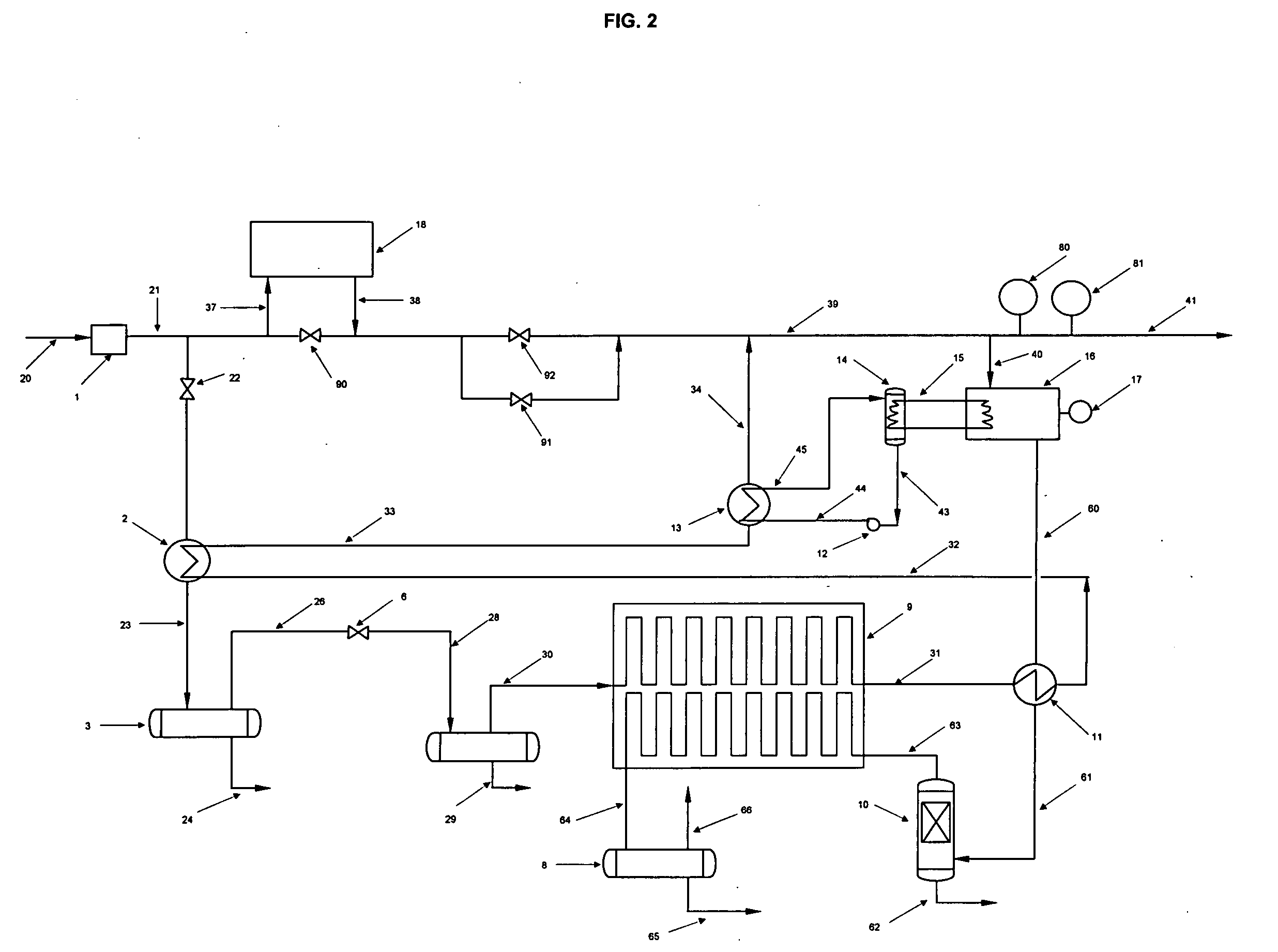Method to condense and recover carbon dioxide from fuel cells
- Summary
- Abstract
- Description
- Claims
- Application Information
AI Technical Summary
Problems solved by technology
Method used
Image
Examples
Embodiment Construction
[0007]The preferred method to recover and condense carbon dioxide embodiment will now be described with reference to FIG. 1.
[0008]In this process cryogenic energy generated at gas Metering and Pressure Reduction Stations (MPRS) is recovered to condense carbon dioxide. The generation of cryogenic temperatures at MPRS is an efficient method to conserve and recover energy versus the current practice of consuming more energy (pre-heating the gas) to condense and recover carbon dioxide as a liquid and or as a solid for consumption as a commodity.
[0009]The present practice has a natural gas stream 20 entering a filter vessel 1. The filtered stream 21 is then routed through stream 37 to an hot water heat exchanger 18 for pre-heating to prevent the formation of hydrates downstream of pressure valves 91 and 92, the heat addition is controlled by temperature transmitter 80. The pre-heated gas stream 38 is then depressurized through a pressure control valves 91 and 92, this pressure reduction ...
PUM
 Login to View More
Login to View More Abstract
Description
Claims
Application Information
 Login to View More
Login to View More - R&D
- Intellectual Property
- Life Sciences
- Materials
- Tech Scout
- Unparalleled Data Quality
- Higher Quality Content
- 60% Fewer Hallucinations
Browse by: Latest US Patents, China's latest patents, Technical Efficacy Thesaurus, Application Domain, Technology Topic, Popular Technical Reports.
© 2025 PatSnap. All rights reserved.Legal|Privacy policy|Modern Slavery Act Transparency Statement|Sitemap|About US| Contact US: help@patsnap.com



